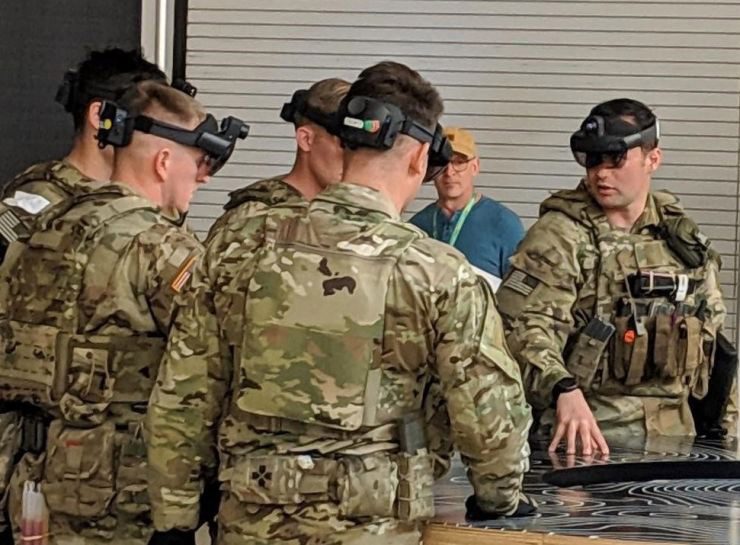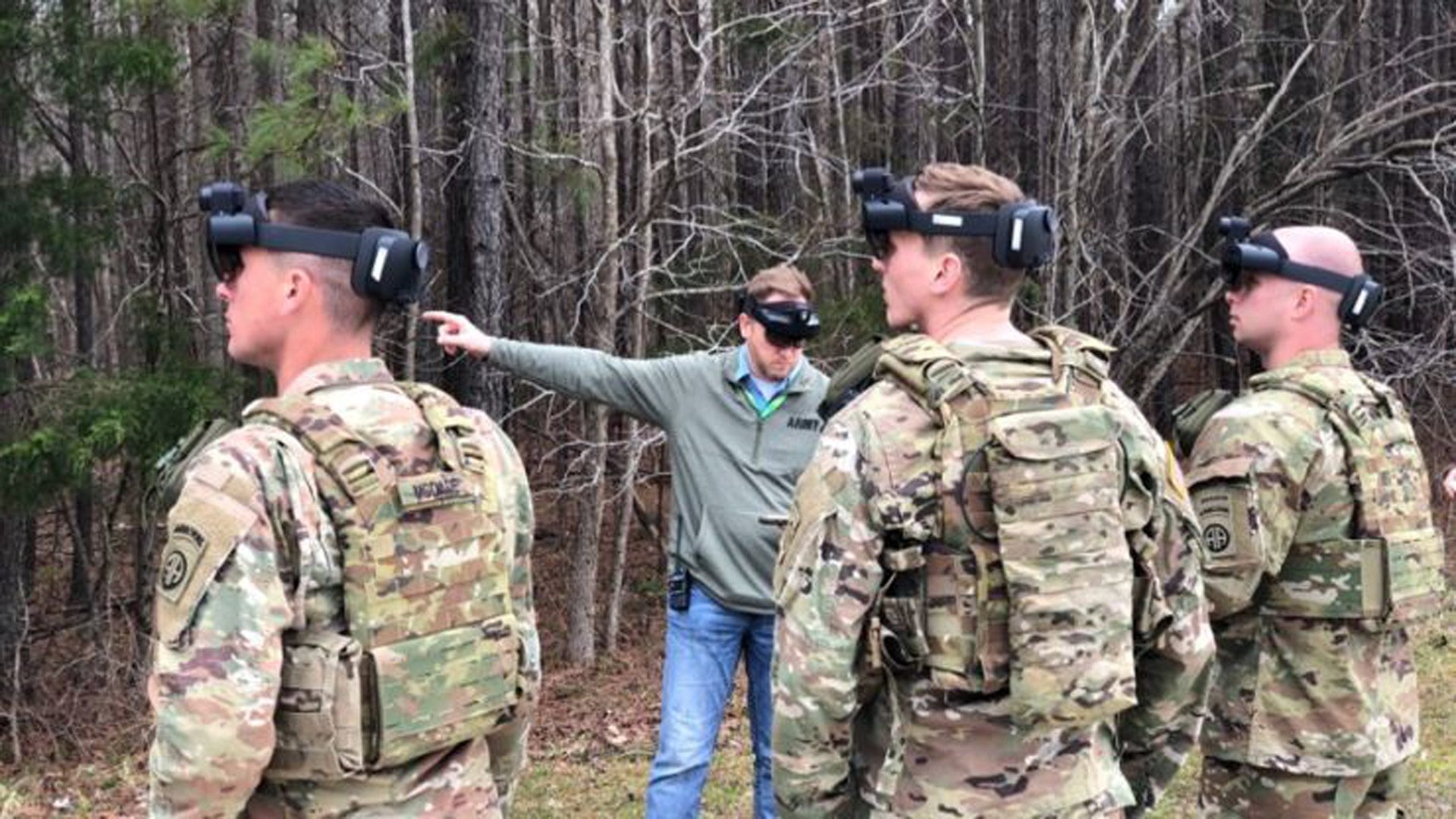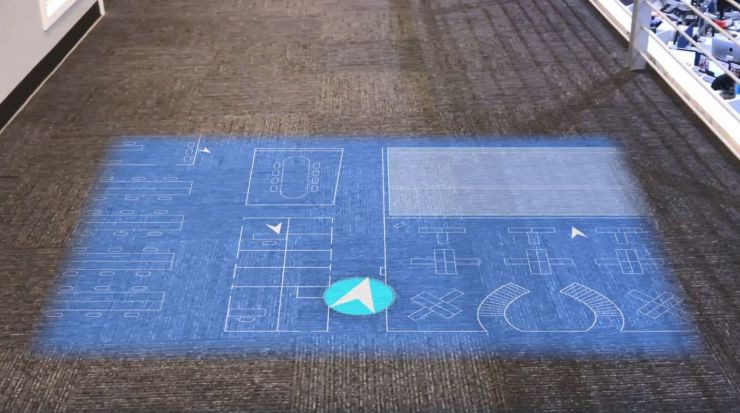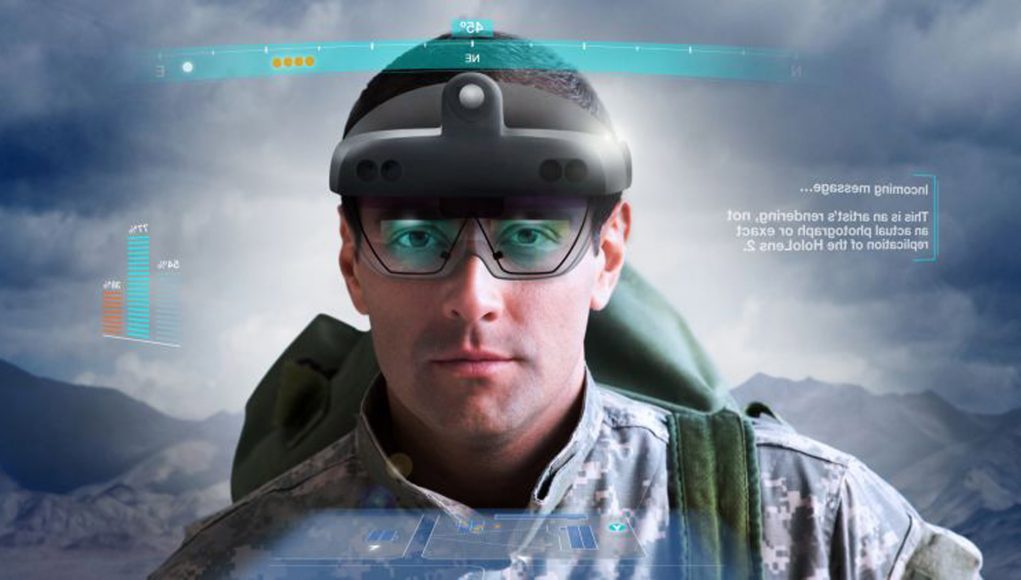Microsoft won a decisive $480 million defense contract with the U.S. Army late last year to bring the company’s AR hardware platform to the battlefield. Now CNBC has gone hand-on with the modified headset based on the enterprise-focused HoloLens 2.
Dubbed the Integrated Visual Augmentation System (IVAS), the headset is still in its initial phases. At the moment, IVAS is ostensibly a stock HoloLens 2 sporting custom software, however CNBC learned the headset was also outfitted with a ball-shaped thermal sensor created by Flir, a company creating thermal and visible light imaging hardware; current night vision can be obfuscated by smoke, however thermal imaging doesn’t suffer from that problem, making it an ideal addition to the headset.
The Department of the Army has secured 12 such sensor contracts in total, so there’s no telling what else will come to the headset and in what configuration in the near future.

Under Secretary of the Army Ryan McCarthy said he expects a more slimmed-down version of the headset based on HoloLens 2 to materialize as soon as 2022 and 2023, and maintains the Army will begin “fielding it to thousands and thousands of soldiers across the force.”
As with all things military-related, no candid video or images were permitted, however the Army did provide a few approved images of the headset as it is now.

Trying on one of the IVAS headsets, CNBC’s Todd Haselton maintains he was able to see 3D images, information, his actual location on a map, and a thermal view of the world around him.
It gave me a birds-eye view of the building I was standing in and also showed a nearby building. It’s like any satellite image you can find online.
But as I turned my head, a small arrow icon representing my location also turned. I could also see several other dots representing my other “squad members” who were also wearing the headsets.
The Army currently intends on using the headsets for training purposes during its rapid iteration phase—it doesn’t fit under a helmet just yet—however it’s clear that the potential advantages will be a boon for soldiers on the ground in the future. Seemingly taking its cues from first-person shooters, Haselton also remarked that the system displays a weapon’s reticle as well.
“Whatever we do on the ground plays off of what we do in training for real-time missions and the real world,” one soldier said. “We might not know what [the battlefield] looks like, but we can predict and take Google images and implement that into the IVAS. It’s a huge boost to rehearsal.”

IVAS also provides what the Army calls “after-action” reports, giving soldiers a summary of their accuracy and performance after a training exercise. The headset can also gather data such as a soldier’s heart rate to improve training and marksmanship.
Speaking to a group of special forces soldiers tasked with IVAS training, the soldiers continuously referred to the headset as a “combat multiplier,” or a supporting technology that significantly increases the relative combat strength of a force while actual force ratios remain constant.
All of this hasn’t gone unchallenged though. After the defense contract was announced in November, a coalition of Microsoft employees wrote an open letter to company CEO Satya Nadella and President Brad Smith, stating that “intent to harm is not an acceptable use of our technology.”
While the company has previously licensed tech to the U.S. Military, it has never crossed the lines into weapons development. With this contract, it does. The application of HoloLens within the IVAS system is designed to help people kill. It will be deployed on the battlefield, and works by turning warface into a simulated “video game,” further distancing soldiers from the grim stakes of war and the reality of bloodshed.
“I appreciate their concerns,” McCarthy told CNBC, referencing the letter, “but these are the same men and women that are protecting their freedoms so they can develop this technology.”
Evidenced by CNBC’s recent hands-on with the soon-to-evolve headset, it appears Microsoft hasn’t given into any of the group’s demands, which stipulated cancelling the IVAS contract, stopping development on all weapons technologies, and appointing an independent ethics review board.







